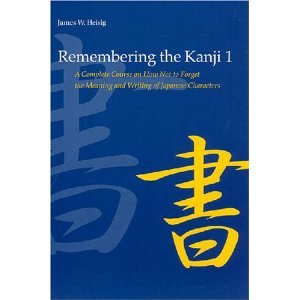Издательство: Japan Publications Trading Co. , 2001 г. , 516
стр.
The aim of this book is to provide the student of Japanese with a simple method for correlating the writing and the meaning of Japanese characters in such a way as to make them both easy to remember. It is intended not only for the beginner, but also for the more advanced student looking for some relief from the constant frustration of how to write the kanji and some way to systematize what he or she already knows. The author begins with writing because-contrary to first impressions-it is in fact the simpler of the two. He abandons the traditional method of ordering the kanji according to their frequency of use and organizes them according to their component parts or "primitive elements. " Assigning each of these parts a distinct meaning with its own distinct image, the student is led to haess the powers of "imaginative memory" to lea the various combinations that result. In addition, each kanji is given its own key word to represent the meaning, or one of the principal meanings, of that character. These key words provide the setting for a particular kanji's "story, " whose protagonists are the primitive elements.
In this way, students are able to complete in a few short months a task that would otherwise take years. Armed with the same skills as Chinese or Korean students, who know the meaning and writing of the kanji but not their pronunciation in Japanese, they are now in a much better position to lea to read (which is treated in a separate volume).
The aim of this book is to provide the student of Japanese with a simple method for correlating the writing and the meaning of Japanese characters in such a way as to make them both easy to remember. It is intended not only for the beginner, but also for the more advanced student looking for some relief from the constant frustration of how to write the kanji and some way to systematize what he or she already knows. The author begins with writing because-contrary to first impressions-it is in fact the simpler of the two. He abandons the traditional method of ordering the kanji according to their frequency of use and organizes them according to their component parts or "primitive elements. " Assigning each of these parts a distinct meaning with its own distinct image, the student is led to haess the powers of "imaginative memory" to lea the various combinations that result. In addition, each kanji is given its own key word to represent the meaning, or one of the principal meanings, of that character. These key words provide the setting for a particular kanji's "story, " whose protagonists are the primitive elements.
In this way, students are able to complete in a few short months a task that would otherwise take years. Armed with the same skills as Chinese or Korean students, who know the meaning and writing of the kanji but not their pronunciation in Japanese, they are now in a much better position to lea to read (which is treated in a separate volume).

